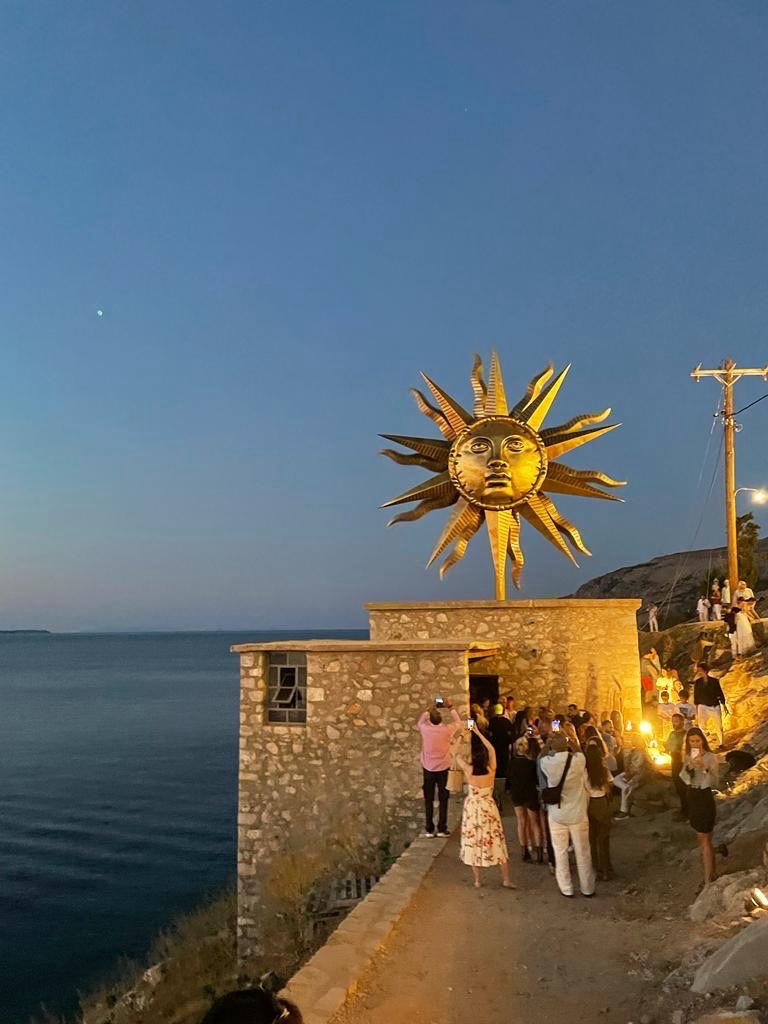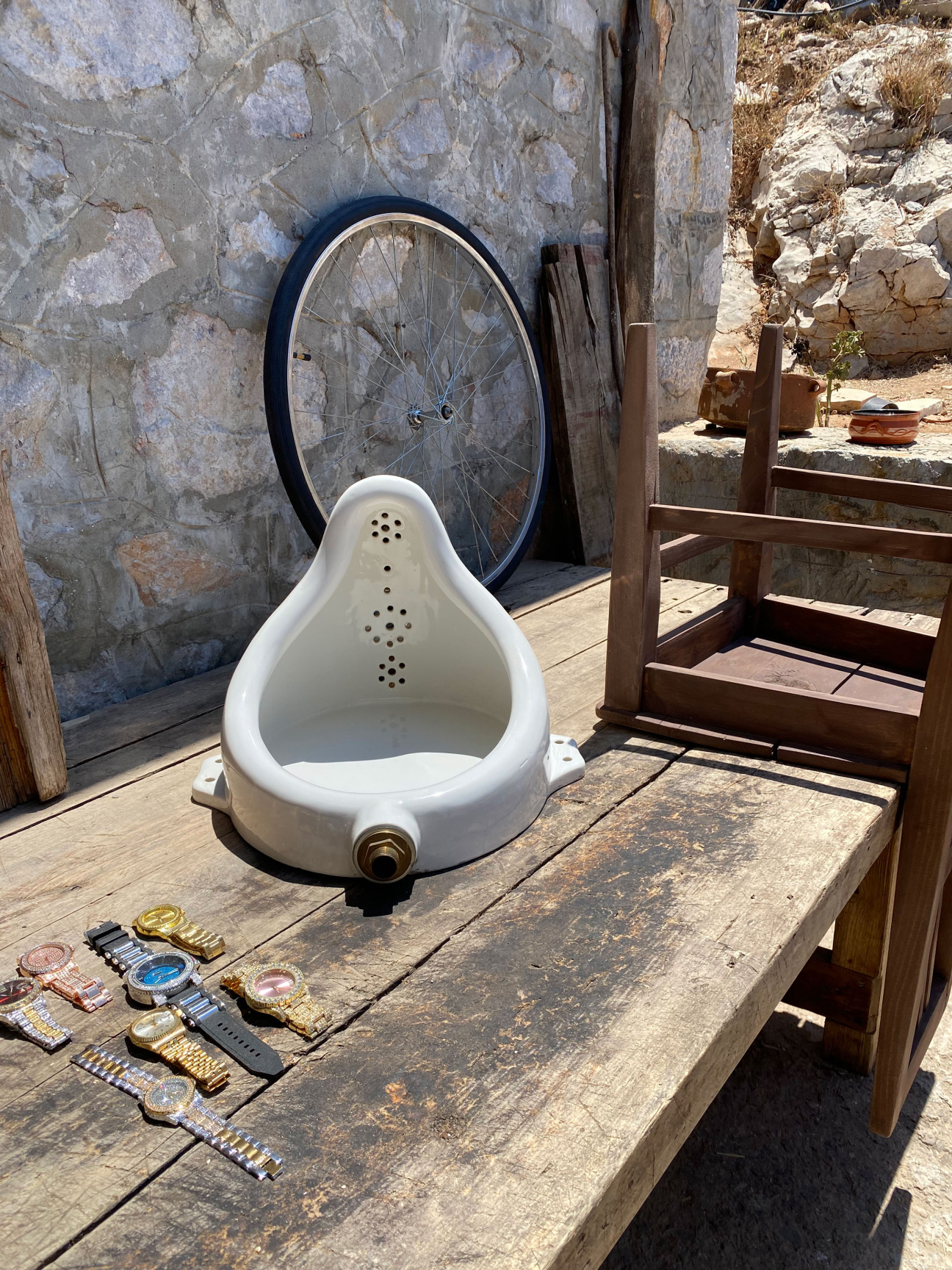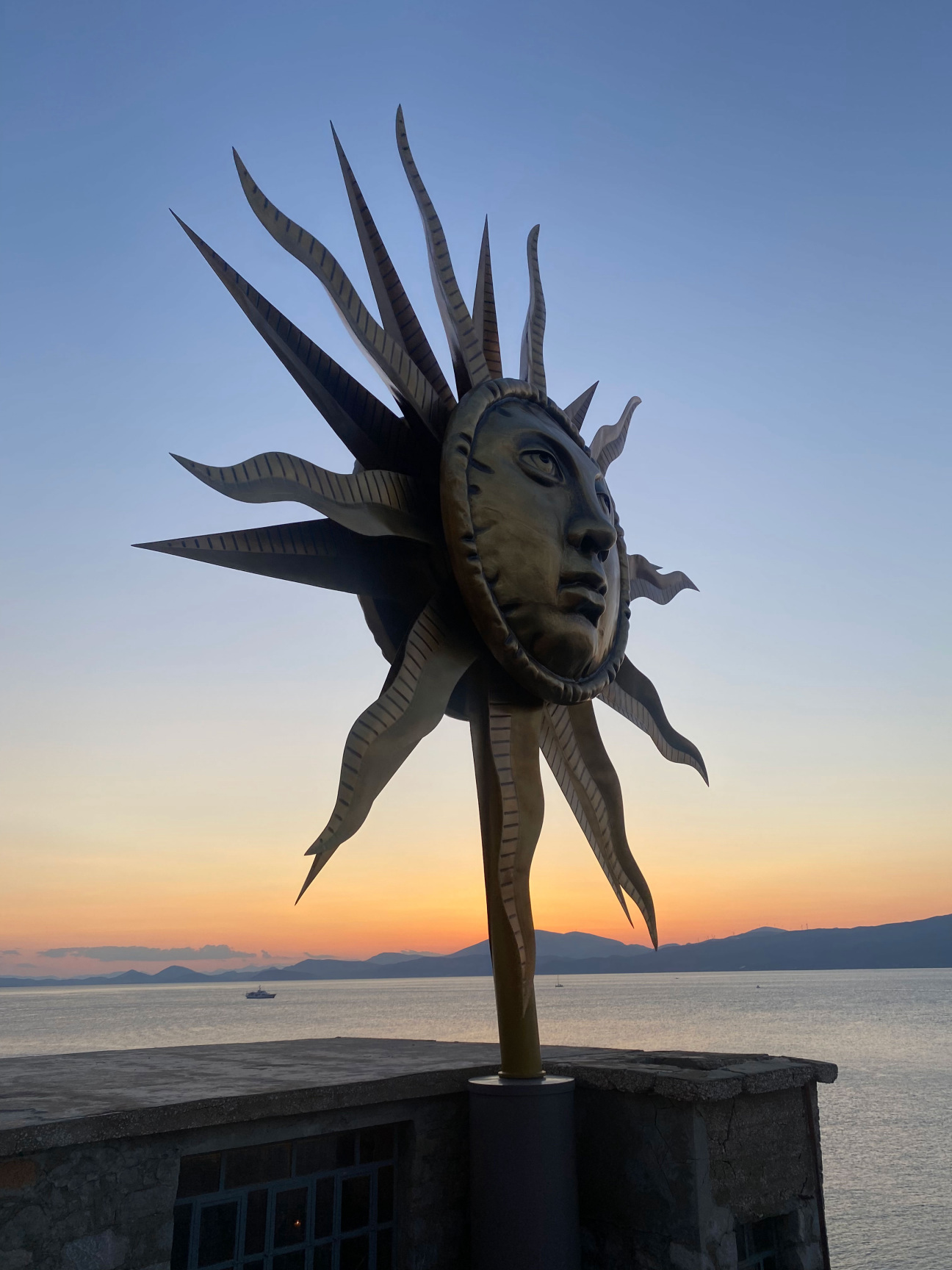Since 2009, super-collector Dakis Joannou’s Athens-based Deste Foundation has been hosting annual exhibitions in the Slaughterhouse, a project space perched on a cliff on the Saronic island of Hydra. Each summer, the vernissage functions as a kind of after-party to Art Basel where after the opening days of the fair, “the collectors, the curators and the gallerists come to this tiny island with no cars allowed, only donkeys,” Constantinos Tsetsos of Athens gallery Dio Horia told me. They come to Hydra for the art, then stay to swim at its beaches.
“This year is really special,” he added, because after two years of pandemic cancellations, the Deste summer party returned on Monday with “Apollo,” an exhibition by Jeff Koons on view through October 31. (The foundation’s space in Athens also recently opened a new exhibition honoring the late Kaari Upson.) Koons inspired Joannou to become a collector when they first became friends in the 1980s—and later designed the colorful patterns on the façade of the luxury yacht that Joannou docks in Hydra’s port.

The evening was, inarguably, a scene: at sunset on the day before the summer solstice, as the light was sinking from shades of gold to purple to black, hundreds of people had crowded the dirt path leading down to the tiny stone building. They were a mix of art world elites dressed in designer resortwear, island tourists and various high-profile artists, including Maurizio Cattelan, KAWS, Martin Creed and Sue Webster. While a handful of VIPs were invited to scale down the precipitous cliffside to cut to the front of the line, most visitors waited up to 45 minutes to get in.
Inside, they discovered what Koons had been keeping a secret for the last two years—his plan to transform the Slaughterhouse into a temple, where its formerly sparse stone interior is newly tiled with mosaic floors and painted with classical frescoes. He planted an enormous golden sun on the roof, the rays of which turn in the wind like a pinwheel. Outside the entrance on the opening night, incense was burning, goats were caged between stone stalls and a young man was dressed in an ancient Grecian-style tunic. A worn wooden table with a urinal, a bicycle wheel and a plate of fresh koulouri read as an altar either for Apollo or Marcel Duchamp.


In a mash-up of cultural symbols of different times and places, the centerpiece was a colorful statue of Apollo himself, Greek god of knowledge, the arts and the sun. He stood nude on a podium holding a kithara, and rather than white marble, his skin had the tanned, plastic finish of a Ken doll. He was accompanied by a real woman standing as still as a statue, and an animatronic, albino snake moving too much like the real thing. “I was scared—I thought it was real,” said artist Maja Djordjevic. Late into the night over drinks, several others told me the same thing.
There was no accompanying text or press release to unpack what anyone had seen, which left everything open to interpretation. At least two women mentioned that the albino snake reminded them of a specific Britney Spears performance on MTV, and wondered: was this Koons’s reference to pop culture? During my visit, the Britney Spears single “Piece of Me,” stripped down to its vocals, was playing inside the installation and echoing like a religious chant. The sun on the roof might have been a reference to Apollo as the sun god, or Koons’s stated fascination with lawn ornaments, or as a few Swiss visitors pointed out, the official logo of St. Moritz. Two of my friends bought matching sun necklaces, a perennial staple in the local souvenir shops, to commemorate the event. Their purchases resonated with what the artist had said during a panel discussion in Athens the previous Friday, describing the installation as an homage to his relationship with Joannou: “It’s really about celebrating the power of art and friendship.”










 in your life?
in your life?

